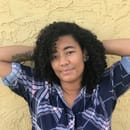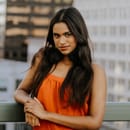When you were a kid, did you identify with the Disney princesses because they had blonde or red hair like you? Or maybe you didn’t because none of them had your shade of skin. Perhaps this ability or inability to relate to the princesses affected your belief in weather you could be one yourself. Representation is important for people for this reason. Representation in the LGBT+ community is growing steadily in music and the cinema. It’s unlikey to find someone who hasn’t heard of “Ru Paul’s Drag Race” or “Queer Eye.” That’s awesome! But while representation is growing in certain areas, LGBT+ relationships are still considered content to be censored, preventing representation from reaching those who might need it. Censorship also silently says that LGBT+ relationships are taboo, even wrong. One place this can be found is in commercials. Today I want to share with you a couple channels and platforms that support or deny use of LGBT+ relationships in commercials.
Advertisements are interesting because they’re created to invite you to use or buy a product. If it’s for children, they’ll show a family for example, maybe appeal to mothers by using words like ‘safety.’ So, it would make sense, since LGBT+ people have families with children and some are religious, to include them in the commercials for family products or on religious channels so they can at least be part of the marketed audience. There’s a YouTube channel that posts updates with LGBT+ content including commercials called Broken Rainbows. I’ve been following it since about 2015 because I noticed I never saw LGBT+ couples in commercials. Nowadays, I notice a couple on The CW, but the fact they stand out shows that they’re still not as commonplace as couples that depict a man and woman and/or imply heterosexuality. There are two names with large audiences who currently example interactions with the LGBT+ community when it comes to commercials. The first is the NFL through the event football fans live for, the Super Bowl.
The Super Bowl gains so much attention and is given so much importance that even the thirty second commercials are watched and bring the advertised brand profit. Consider the attention Doritos and Apple gained from Super Bowl commercials. The price of a commercial slot being about five million bucks speaks to that too. This year, the Super Bowl is offering representation to the LGBT+ community by including drag queens in one of their ads. Now, drag can be done by straight men or women, gay men, lesbian women, anyone, so drag alone isn’t what connects this to the LGBT+ community. It’s those involved in it. In this case, Miz Cracker (Maxwell), Kim Chi (Sang-Young) and Ru Paul are our queer representation. Associating LGBT+ representation with football isn’t only growth, but a huge step considering homophobia hasn’t been silent in the sports industry.
Another area homophobia can be found is in religion.
Not every religious person, religous institution or religion itself condemns homosexuality. Even then, it may be a personal opinion or interpretation of a religious text that fuels the negativity, not the institution or religion itself. A popular name brand known for its “home and family” feel good movies, collectables and greeting cards is Hallmark. Their television channel has been in the news and a nice boiling pot of water after the channel CEO censored an ad including two women getting married. The message censoring the ad sends is that LGBT+ relationships aren’t appropriate for Hallmark’s audience or supported by the company. But, community rebuttal didn’t let this slide. Human Rights Campaign members and supporters pushed back through a letter combating the censorship and the ad company (Zola) retracted their business after seeing that Hallmark accepted their ads with two heterosexual couples but not with the two brides. After the censorship and rebuttal there was a statement from Hallmark cards stating they were sorry because their decision was bad for business not for hurting people. Fortunately, both the action and first statement were corrected through their second statement which reinforced Hallmarks commitment to inclusion. Now with the commercial on air representation is allowed to get across another long standing hurdle.
Through these examples, we can see that there’s growth in representation and still work to do to ensure growth continues. I’m going to keep an eye out for more commercials in the future supporting queer couples and families, and maybe you’ll do the same. I hope though that I stop noticing and it just becomes commonplace. It looks like we could get there!



